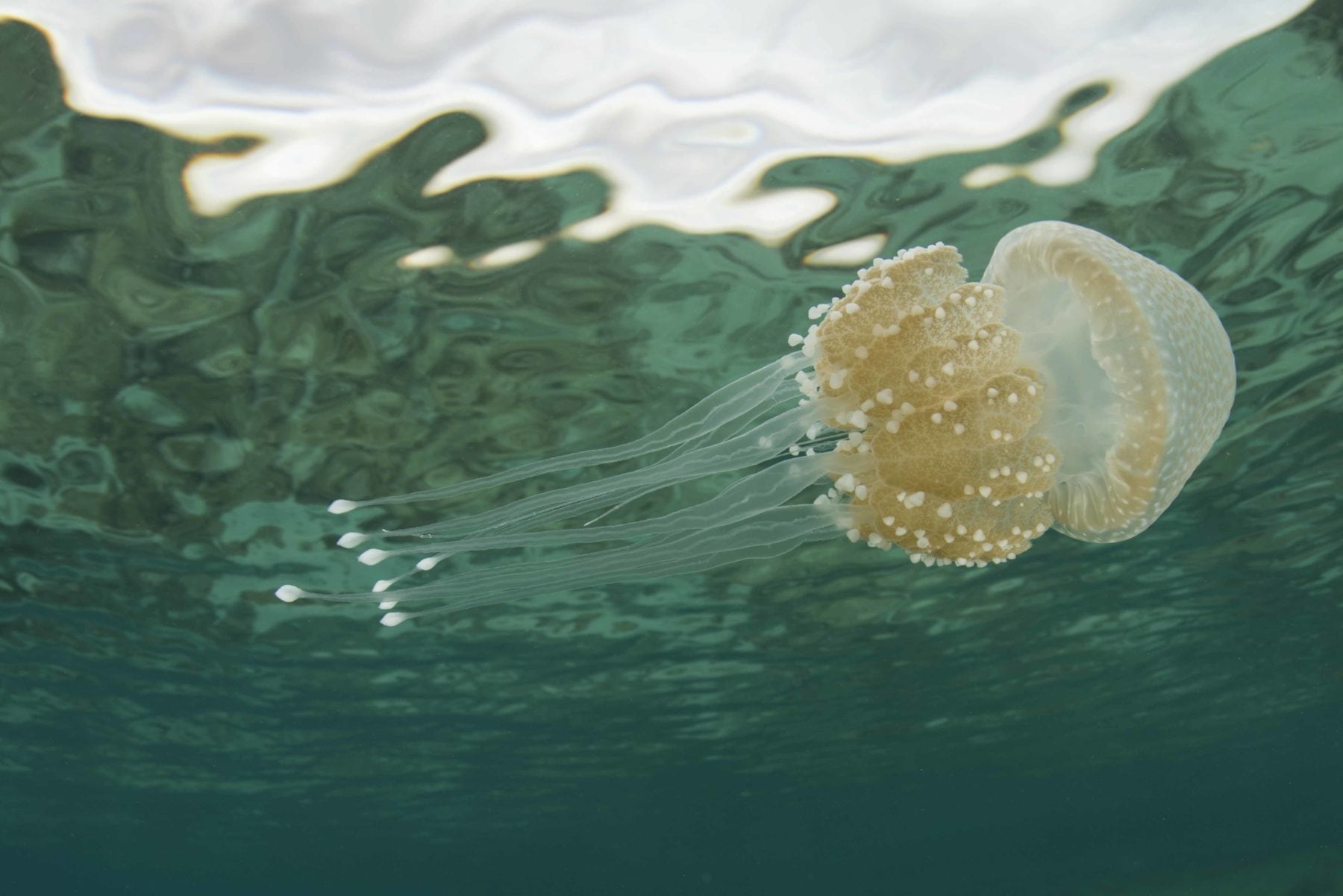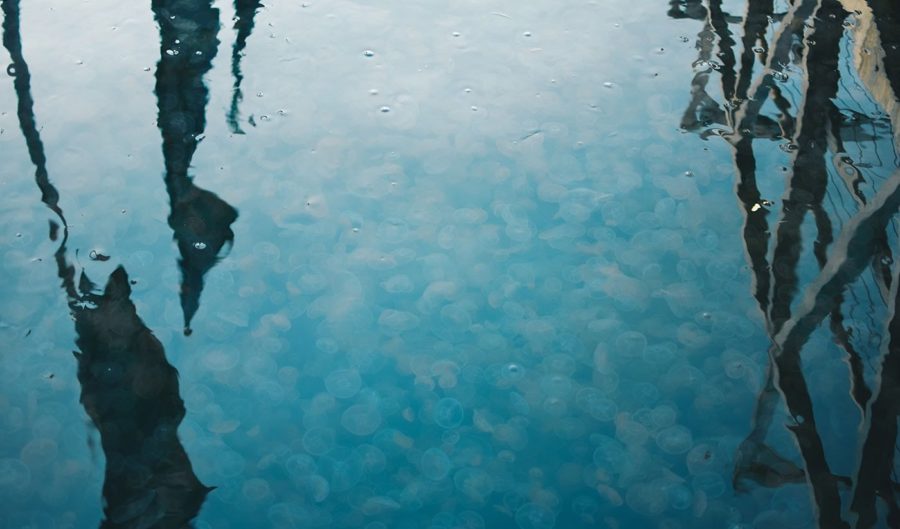Jellyfish used to drift under most people’s radars. But in recent years they’ve become hard to ignore, with reports of increasing jellyfish ‘swarms’ along coastlines and in harbours. These events are more accurately known as jellyfish blooms and are a natural stage in the population life cycles of these mysterious, diaphanous creatures that invoke both revulsion and fascination. But there’s concern about the increasing frequency and size of such events, with some blooms thought to be indicators of ecological disturbance caused by anthropogenic factors such as pollution and overfishing.
Leading international jellyfish researcher Dr Kylie Pitt, a professor in marine ecology at the school of Environment and Science at Griffith University, Queensland, has, for the past decade, been investigating reasons for these explosions of gelatinous marine life. Most recently she headed a review by an international team of scientists looking into the role played by human impact, the results of which were published in the journal Frontiers in Marine Science in late 2018. Although this has the potential to enhance jellyfish blooms, the review found little proof this was already happening on a grand scale. There are a few problem species, but jellyfish certainly aren’t taking over our waters as some media reports have suggested.
What this and similar research has exposed, however, is a far bigger problem: at a time when many of the world’s marine habitats face unprecedented environmental threats, very little is known or understood about one of the oldest and most pervasive animal groups in our oceans.
“As a community we need to qualify the statements we make about jellyfish to strike a better balance between what we think we know and what we actually know,” Kylie explains. “We really need to stop making claims that jellyfish are thriving in the world’s oceans and stop labelling the entire group as pests, because it’s just not the case.”
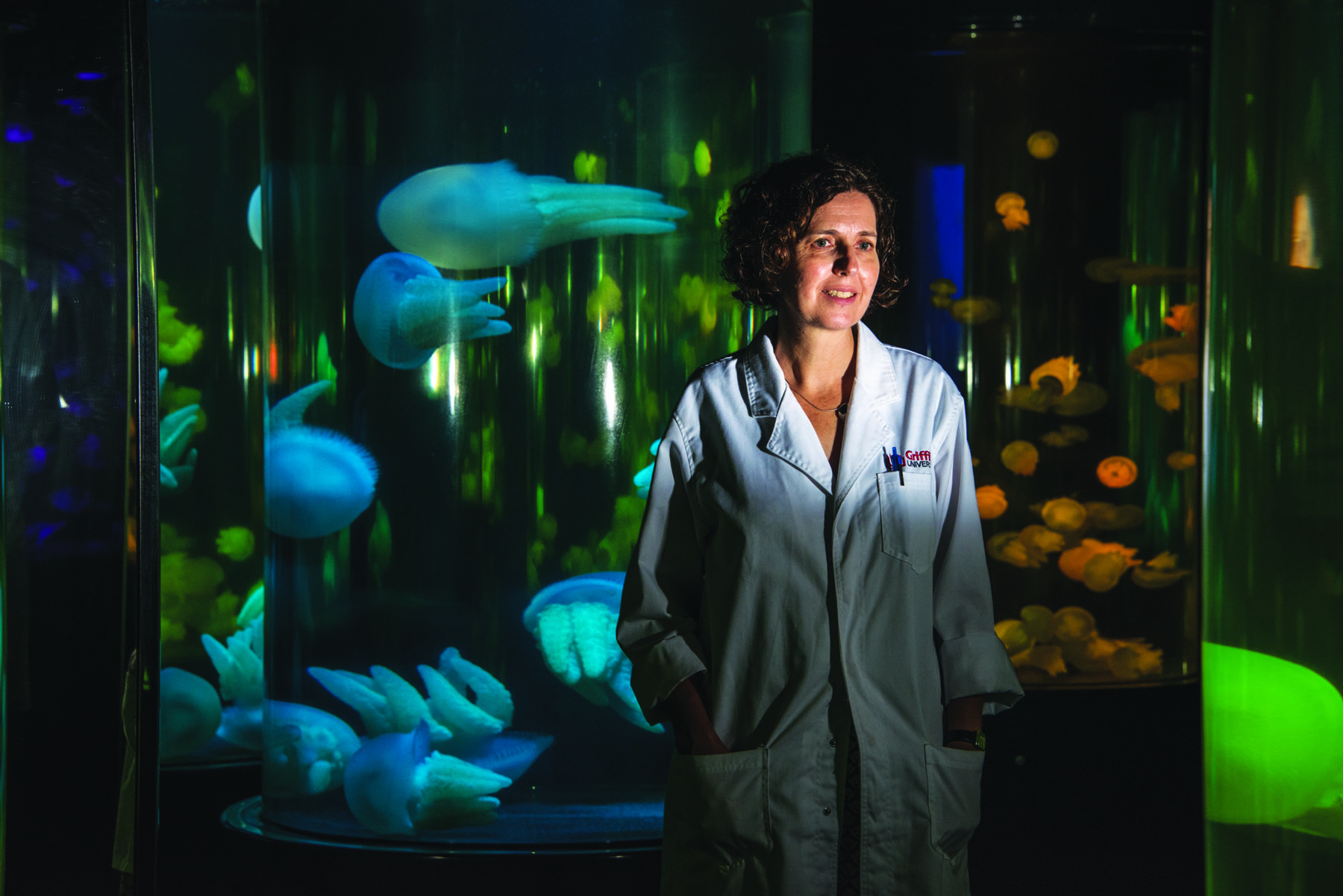
As with any other animal group, Kylie says, some jellyfish species struggle in disturbed systems, while others show more resilience and are able to survive in low oxygen and highly polluted environments.
Two species dominate reports of jellyfish blooms around the world – the moon jelly and the warty comb jelly, both of which are known to explode in numbers when introduced to new areas. Kylie’s research review identified that these two invasive species share traits that allow them to survive better than other jellyfish. The warty comb jelly, for example, matures earlier and at a much smaller body size than many other types of jelly, allowing it to out-compete native species.
Foreshore infrastructure provides important habitat for jellyfish to reproduce and complete their life cycles (see page 71), but it can also support unnatural jellyfish blooms. The polyp stage needs a solid surface on which to settle, so jetties, seawalls and boat moorings offer invasive species, such as moon jellies, hard structures they are able to exploit as nursery locations. This can provide them with an advantage over naturally occurring species that don’t exploit these artificial facilities.
“The jellyfish research community tends to focus on these problematic species,” Kylie acknowledges. “And my concern is that people are drawing the wrong conclusions and generalising across all types of jellyfish as a result of the habits of these invasive and tough species.”
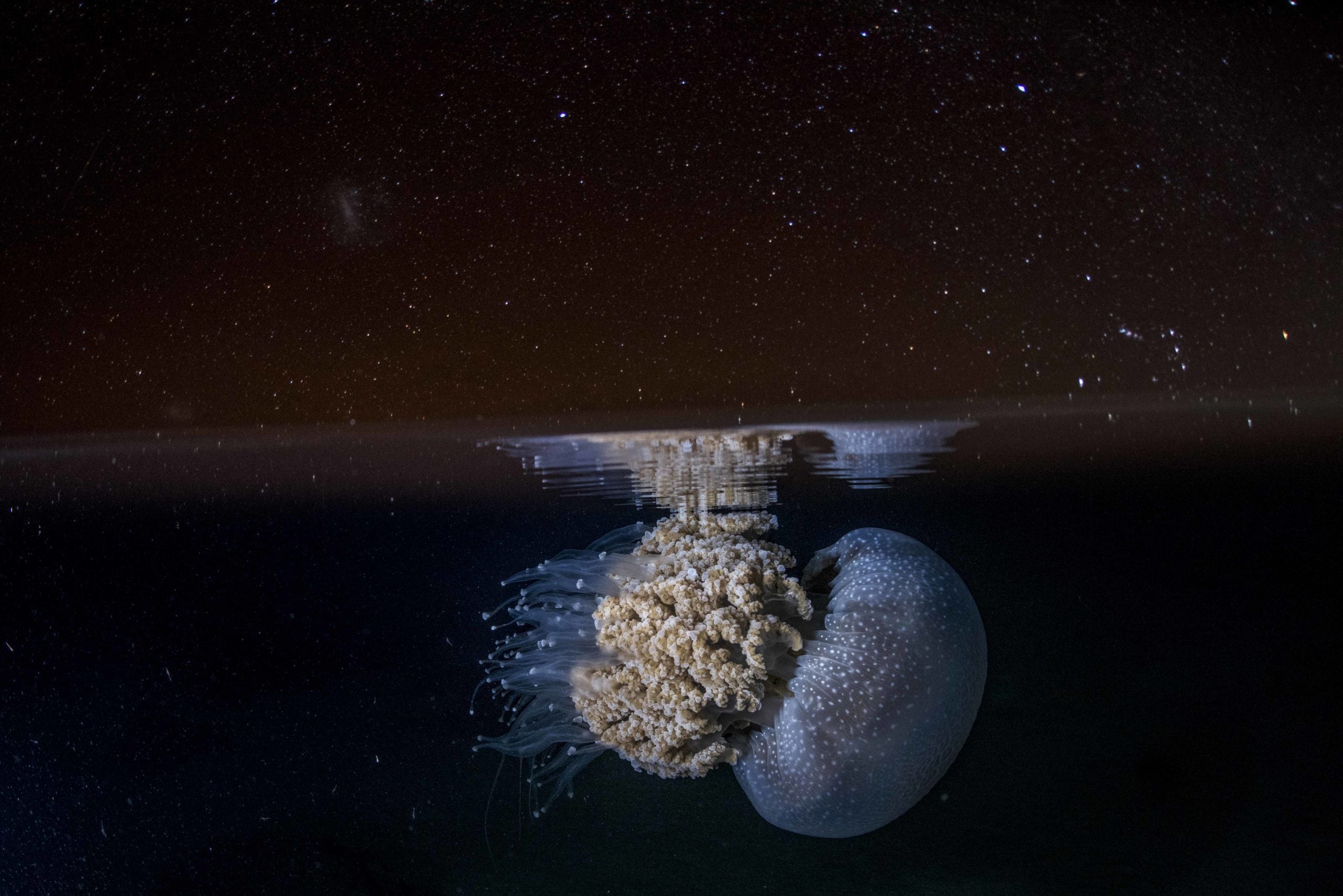
A need for greater appreciation of jellyfish
Kylie and her team hope to substantially change the status of jellyfish as one of the world’s most poorly studied animal groups, by using a combination of field-based observations and controlled laboratory experiments.
Studying jellyfish in the lab is particularly challenging. They don’t survive well in standard aquariums because they repeatedly swim into the glass until they rub holes in their bells, which ultimately kills them.
In 2017 Kylie’s passion to encourage a greater appreciation of jellyfish, and to help debunk some of the myths surrounding them, led her to establishing the purpose-built Griffith Sea Jellies Research Laboratory. The facility – a collaboration between Griffith University and Sea World on the Gold Coast of Queensland – houses special aquariums known as kreisel tanks, which have a circular water flow and curved surfaces, preventing jellyfish from colliding with walls.
Kylie’s team is using the new facility to test links between human factors and jellyfish blooms, to clarify the role of jellyfish in supporting ocean biodiversity and identify what part they may play in marine ecology and nutrient cycling.
“We have been doing research on jellies for 17 years, but most has been on the polyp stage because they are so tiny and we can keep them in beakers,” Kylie explains. “We haven’t been able to do experimental work on the medusa [final life-cycle stage], but that’s what this new lab has now allowed us to do since it opened in September 2018.”
The team can change conditions in different tanks to see how jellyfish might react in the wild.
“We have a control tank with optimal conditions but then have other tanks to test how – by changing levels of nitrogen, oxygen and carbon dioxide – jellies respond to climate change stress factors such as warming, and how they respond to acidification, hypoxia, and an increase in pollutants such as pesticides,” Kylie says.
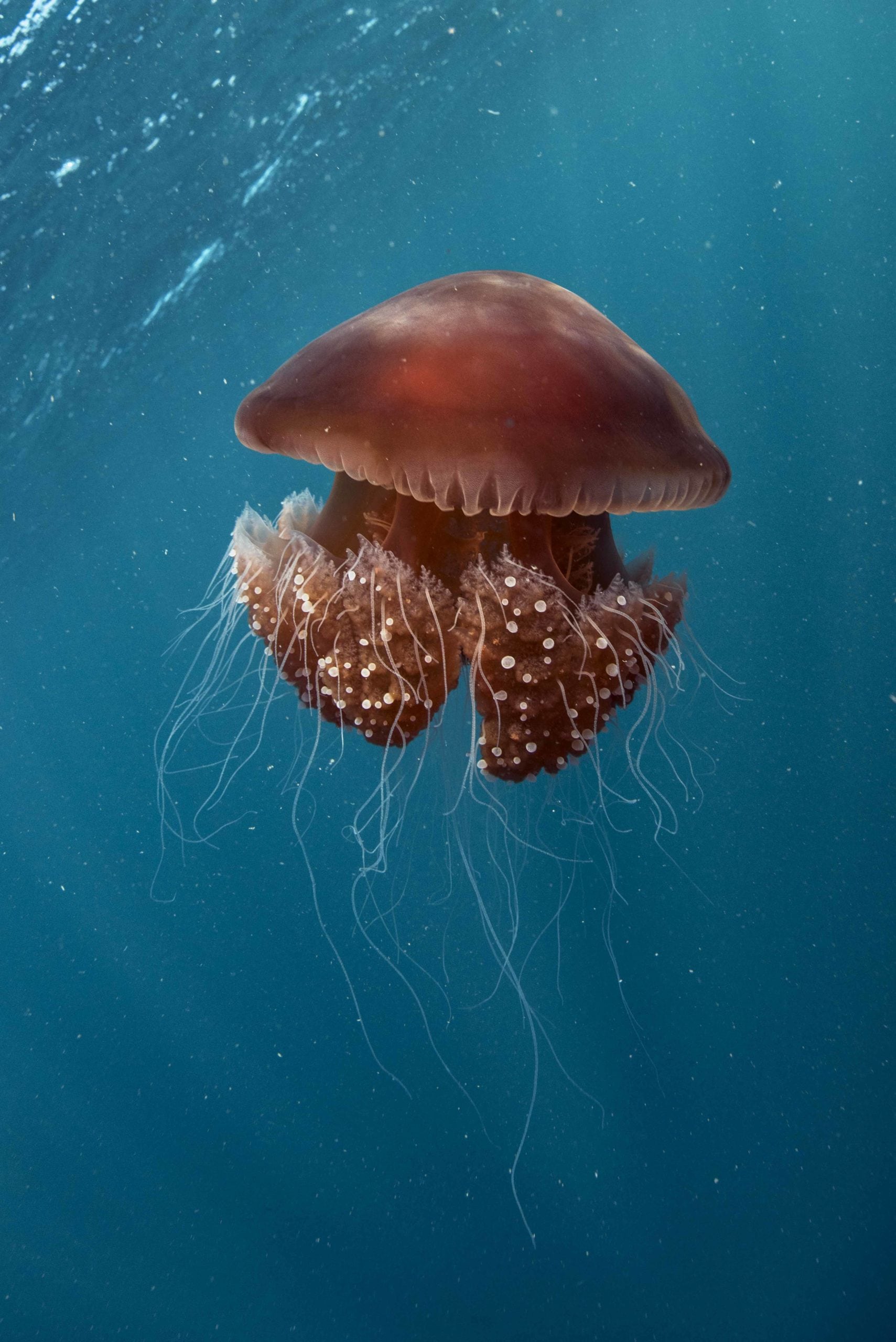
Fossil evidence suggests jellyfish blooms have occurred in the world’s oceans since the creatures first appeared more than 500 million years ago and that, although there’s little evidence to suggest jellyfish are taking over the oceans, there are some places in the world where they are occurring at problem levels.
In the Sea of Japan, for example, there have been blooms of the giant jellyfish species Nemopilema nomurai almost yearly throughout this century. Such occurrences, which are damaging to local fisheries, were only witnessed about once every 40 years throughout the 20th century.
Ocean warming as a result of anthropogenic climate change is thought to help some jellyfish species grow and develop more quickly than others, causing populations to expand significantly. Some studies also suggest that pollution in waters, such as those off the coast of China, have boosted the growth of the microscopic plankton that so many jellyfish feed on. At the same time that this has been occurring, overfishing has been eliminating natural predators as well as other marine animals, such as turtles and fish, that compete with them for food.
Warming waters are also encouraging certain jellyfish species to expand their ranges, appear earlier in the season and increase in overall numbers. This includes certain species in Australian waters thought to be responsible for the potentially fatal Irukandji syndrome.
The sight of sand strewn with dead bluebottles is virtually guaranteed to spoil any Aussie’s perfect day out at the beach.
One such ‘invasion’ happened in January last year with more than 13,000 people treated for stings during a summer holiday week on Queensland’s beaches. Of those that received stings, more than 2630 were treated during a single weekend on the Gold and Sunshine coasts as the problematic jellies swarmed beaches in record numbers. But as distressing as such events can be, there’s still no real evidence that this event was anything out of the ordinary.
In 2012 Kylie was part of another international team investigating claims that jellyfish blooms were becoming larger and more frequent. “We pulled together all of the long-term time series data on jellyfish populations from across the world to examine what the populations were doing,” Kylie says.
To the team’s amazement they found that jellyfish populations oscillate globally in approximately 20-year cycles.
Historical claims that jellyfish blooms were beginning to increase globally in the late 1990s were, in fact, correct, because that was during the last, apparently natural, rising phase of a global increase in jellyfish.
“The internet didn’t exist during the last rising phase of the cycle in the 1970s, so we believe that we didn’t have an opportunity to bring all the evidence together until now, which is allowing us to recognise these emerging trends,” Kylie explains.
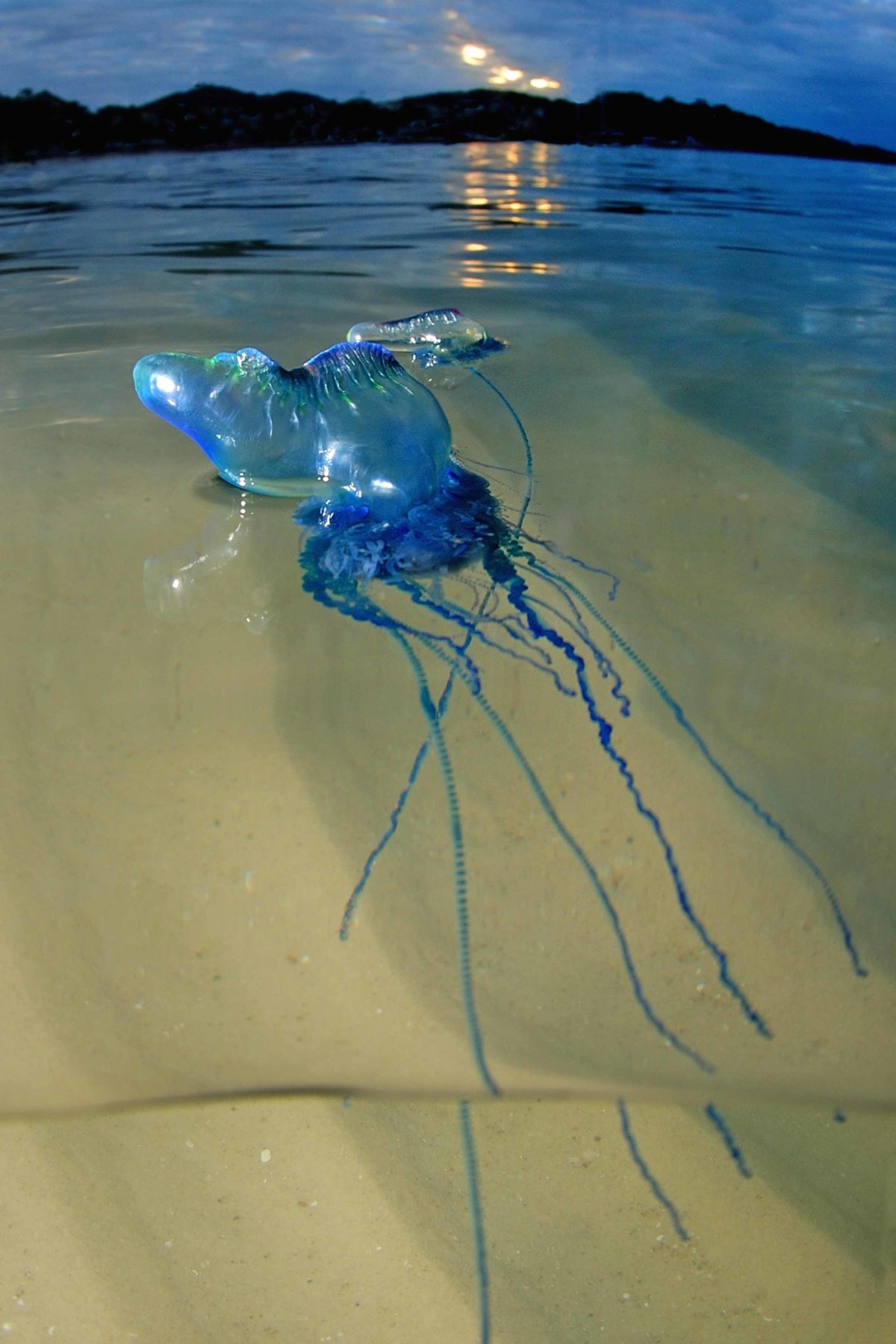
Based on the available data, the researchers agreed that jellyfish do occur in naturally oscillating population patterns. “We have about 15 years of data from Moreton Bay, near Brisbane, and can see that jelly blubbers [there] cycle every 5–7 years,” Kylie says. “This seems to be something natural. And by looking back at the historic data we have been able to determine that it’s not been caused by climate change. It’s a natural cyclic phenomenon that has been going on for a long time.”
Jellyfish populations have been even more poorly studied in Western Australia due to the low population density and the smaller number of coastal industries that might be impacted by them along Australia’s west coast.
In Perth’s Swan–Canning Estuary, the white-spotted jellyfish has been known to form blooms, while similar population explosions of red bell jellyfish and moon jellies have been reported from Ningaloo Reef. “Pearl oyster leases have been affected by jellies in northern WA and I’ve had some of the pearl oyster farmers call up concerned that the jellies might be causing mortalities [in their oysters],” Kylie says. “So blooms certainly occur in WA, but they are really just poorly studied.”
Divers and boaters are often surprised when they find jellies in high abundance at locations where they saw none only weeks earlier. This can be explained by the fact that the final medusa stage of the life cycle often only occurs at certain times of the year when conditions are optimal, which is predominantly during the summer months.
Relatively little is known about the positive role jellies have in the broader ecosystem. Jellyfish can play host to a range of other animal and plant species, including echinoderms such as brittle stars, algae and a range of crustaceans including crabs and shrimp that can live within the jelly itself. They can also provide shelter for juvenile fish that swim around their bells and among the tentacles.
Trevallies and leatherjackets have been known to seek shelter in the safety of jellyfish tentacles. These fish species are skilful swimmers, quick enough to actively avoid contact with their host’s stinging cells. Some researchers suggest these fish might also be resistant to jellyfish toxins as a result of the mucus coating on their skin, similarly to that of clownfish, which safely shelter among the stinging tentacles of anemones.
Jellyfish are an important part of the marine food web. The polyp stage is consumed by many types of crabs and snails, and the medusae are a staple component of the diet of sea turtles. These reptiles are equipped with leathery mouths and hard beaks that protect them from jellyfish stings, and the world’s largest sea turtle species, the giant leatherback, feeds exclusively on jellies. Even the box jellyfish, deadly to so many other animals, including humans, is no match for a hungry sea turtle.
The oceanic sunfish also relies on a diet of jellyfish with a few fish thrown in. And jellies appear on the menus of pufferfish, leatherjackets, bream, Australian salmon and some species of tuna. Some jellies are known to feed on the young of other species. Lion’s mane jellies are known to eat moon jellies.
With jellyfish appearing to be such a vital part of the diet of so many sea creatures, marine plastic pollution is a growing threat to the whole marine food web because of the potential for these floating, translucent animals to be confused with plastic bags. It’s been estimated that plastic harms more than 267 marine species worldwide – not only sea turtles but 36 per cent of all seabird species and up to 28 per cent of all marine mammal species.
At the University of the Sunshine Coast, in south-eastern Queensland, Dr Kathy Townsend, a senior lecturer in animal ecology, is working to determine the impact of entanglement and ingestion of plastics on endangered sea creatures by monitoring the amount of marine debris found inside dead sea creatures taken from the waters of the Gold Coast north to Hervey Bay.
Kathy has studied the visual acuity of sea turtles and combined her findings with what she’s found in the stomachs of these reptiles when they turn up dead in coastal waters. “It turned out the items that turtles eat are not random,” Kathy says. “They certainly make decisions about what they are going to eat.”
The study also found that green sea turtles, in particular, are naturally curious and will target white and translucent jellyfish-like items.
“The texture, flexibility, contrast and colour of materials all combine to help the sea turtles make a decision about whether an item is something they are going to taste and eat,” Kathy explains.
Since 2006 her team has performed more than 300 necropsies on dead turtles. In about a third, the reptiles had ingested marine debris, with soft plastic bags and balloons the most common items. “We now have the plastic bag ban and the container deposit scheme. My hope for the future is that I will be out of a job because animals, including turtles and seabirds, that choke on them or get entangled will no longer be exposed to these materials,” Kathy says, optimistically.
The volume of debris off southern Queensland compared with other parts of the world is small, but turtle numbers are large, so there’s a high risk of interaction. “It makes it one of the important places globally where we need to concentrate our prevention and rehabilitation efforts by cleaning up our own backyard,” Kathy says.
Shifting the balance back in favour of jellyfish and away from plastic will make our ocean habitats better for all marine creatures, not only off southern Queensland but right around the Australian coast.
